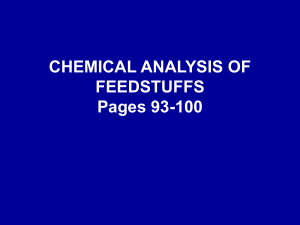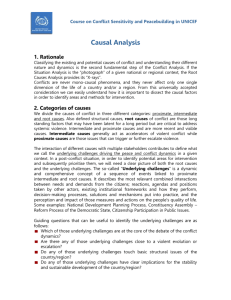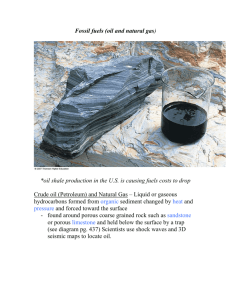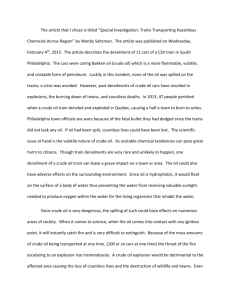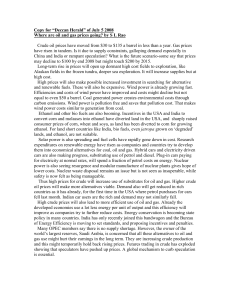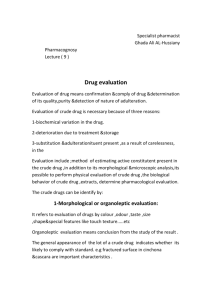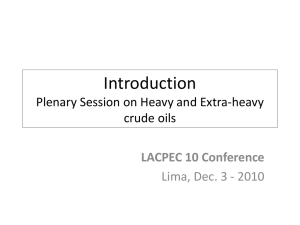Proximate Analysis Proximate Analysis Proximate Analysis
advertisement
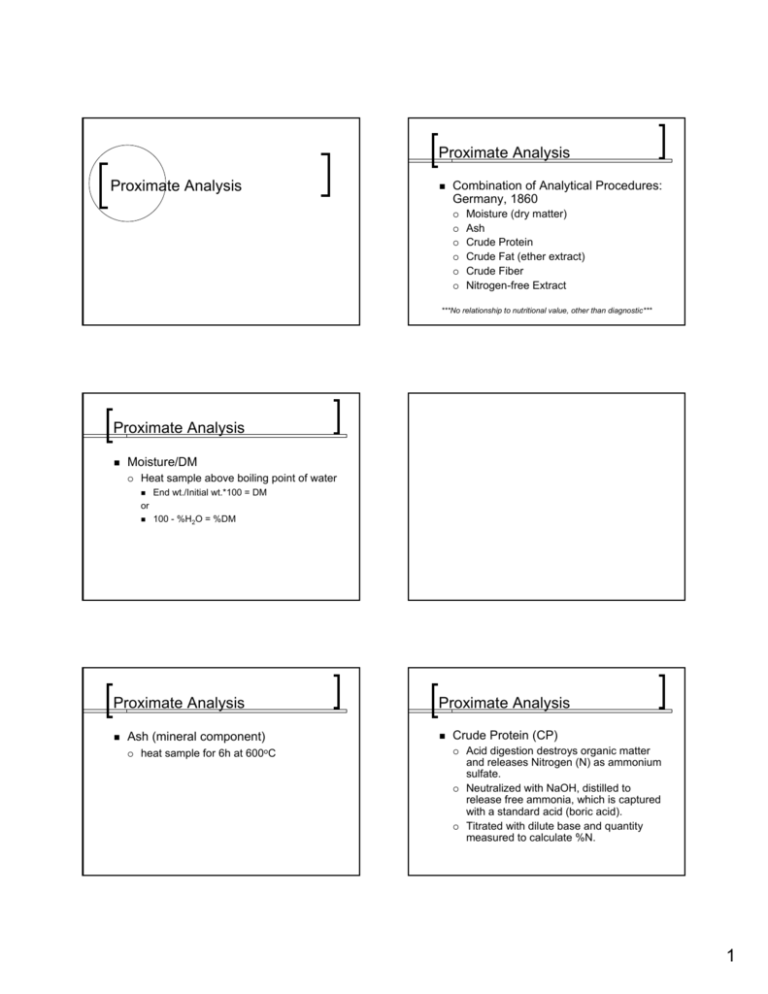
Proximate Analysis
Proximate Analysis
Combination of Analytical Procedures:
Germany, 1860
{
{
{
{
{
{
Moisture (dry matter)
Ash
Crude Protein
Crude Fat (ether extract)
Crude Fiber
Nitrogen-free Extract
***No relationship to nutritional value, other than diagnostic***
Proximate Analysis
Moisture/DM
{
Heat sample above boiling point of water
End wt./Initial wt.*100 = DM
or
100 - %H2O = %DM
Proximate Analysis
Ash (mineral component)
{
heat sample for 6h at 600oC
Proximate Analysis
Crude Protein (CP)
{
{
{
Acid digestion destroys organic matter
and releases Nitrogen (N) as ammonium
sulfate.
Neutralized with NaOH, distilled to
release free ammonia, which is captured
with a standard acid (boric acid).
Titrated with dilute base and quantity
measured to calculate %N.
1
Proximate Analysis
Crude Protein, % = %N x 6.25
Amino acids, on average, contain 16% N
100/16 = 6.25
Proximate Analysis
Ether Extract (EE)
{
{
Sample extracted with ether to remove
lipids
Calculation based on weight difference
Crude Fiber
Crude Fiber
Crude Fiber
{
After EE fractions are removed:
1.
2.
3.
Weak Acid
Proteins/sugars/starches removed
Weak Base
Ashed – cellulose, lignin burned, ash
remains
(Extracted and acid/bassic digested sample – ash residue)
x 100% = %CF
Initial sample weight
2
Nitrogen-Free Extract (NFE)
NFE (nonstructural sugars/starches)
No chemistry, just arithmetic
100 – (%H2O + %CP + %EE + %CF + %Ash)
Gross Energy...
Determined by bomb calorimetry
Energy
Definition
I.
The energy content of feedstuffs
A.
1.
In animal nutrition, we are interested in the
chemical (molecular) energy of feedstuffs
2.
Heat energy can be determined by bomb
calorimetry
3.
One calorie raises the temperature of 1 g of
water 1°C (i.e., 14.5 to 15.5 °C ); a kilocalorie (kcal) raises 1000 g or water 1 °C
3

